kazuhiro nomura, "lion"nov. 19 - dec. 24, 2005 taguchi fine art, ltd. |
|
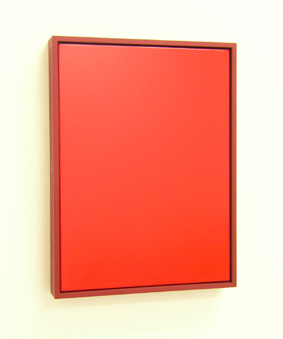
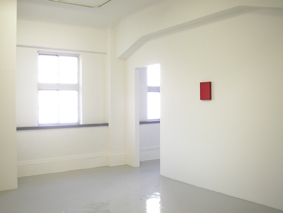
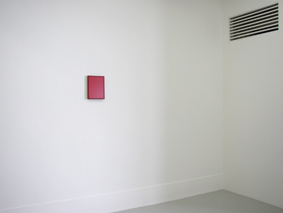
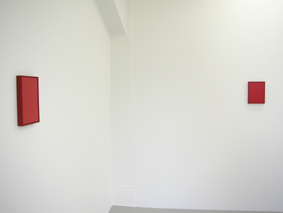
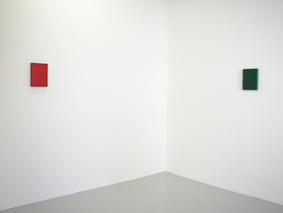
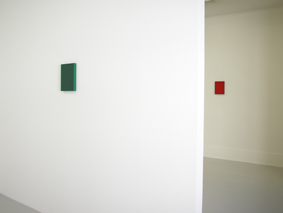
|
Born in Kochi prefecture in 1958, Kazuhiro Nomura now resides in Kanagawa prefecture. After parting his PHD course at the Tokyo University of Arts in 1988, he moved to Germany as a DAAD exchange student. He graduated from Duesseldorf Art Academy in 1990 and returned to Japan in 1993. Nomura's work deals with themes such as: "Words and Meaning"; "Art, System and Society"; "Whole and Parts"; "Perfect existence and Imperfect existence (model and copy)." He has been presenting works such as drawing, painting, performance, and installation that are free of categories, since he was still attending Tokyo University of Arts. After his returning from Germany, Nomura had concentrated to show his serial painting works, painting "tree of life" on small canvases using microscopic points (dots) in five different colors. From 2003, he began to show his ready-made works gradually to the public. "Tree of Life" composed of 621 infinitely small points (dots)This exhibition concentrates on the artist's serial work, which he started in 1989, in his Germany days, and is still at progress. A "Tree of Life' is painted on plane background using 621 points (dots) composed of five different colors - red, black, yellow, orange and green. (All the points are barely visible in sizes, painted with unimaginable concentration.)The shape of the tree is based on a Kitsch Object that the artist found on a windowsill of a Turkish immigrant during his stay in Germany. The Object was in a shape of a tree bearing 6 fruits, and there were three different variations, which were Tomatoes, Lemons, and Oranges. One day, the artist got a hold of these three Kitsch Object, and created a unique imaginary tree by replacing the fruits, so that one tree bore two of the each fruit. (His taking a ready-made product, and converting them into something not of the ordinary is one type of work that the artist has been working on since his Tokyo University of Arts days.) When Nomura considered what should be drawn for the project, he found out this imaginary tree in front of him. Goal to create 500 PiecesIn this series, the number of points and its shape is the same between all pieces, remaining constant. (Number of points used from each color is represented on the bottom of the canvas using the same method, by each color points.) The only difference lies in that the placement of each color scheme varies following a rule, which the artist has created himself. Although the number of variations possible is almost infinite, the artist has set the number 500 as a goal for this series, and so far has created 400 pieces.This series of title-less works is recognized only by its order number, and exists in three different mediums, the wall, tracing paper, and the canvas. In this exhibition, we will be presenting the canvas pieces. LionThese groups of work have had its presentations after Nomura's return to Japan, mainly works with white background. This particular exhibition titled "Lion" consists of works on canvas with "red" background, which appeared for the first time on the occasion of the exhitbition, "Wie oft isst Eva den Apfel ?' at taguchi fine art, ltd., in 2001."To place one color on a canvas is to place another, its complementary color to its side" is the words of one artist from the Impressionist School. In the red background, not only do red points disappear, other four colors show us something completely different and complex in their appearance. The title "Lion" is chosen by the artist because he thinks the condition of red background works among white background works is the same as that of "lion" in the three stages of our mind, which Friedrich Nietzsche indicated in his "Also Sprach Zarathustra". A "Part" realized with the "Whole", and the "Whole" that can only be expressed using "Part"By introducing a group of works based on "red" background, a new category, which is the "Difference in Background Color" was added to the "Whole" of the series, together with the "Difference in Supporting Body" such as the wall, paper, and a canvas. When all the work was being presented in a white background, although there was an understanding that the series was being composed of groups of work differing in its "Supporting Body", the possibility of another type of work with a different background color could not have been imagined. After a group of works using red background was introduced to the series, a possibility of other groups of works with different background, such as yellow or green existing can be also imagined. Furthermore, it brings out the possibility of existence of other categories other than the "supporting body" and "background color", creating the possibility of other various "Parts".In that sense, it is clear that the total piece number of 500 set by Nomura is only a number, which decides how many pieces will actually be materialized, but the "Whole" in which Nomura is attempting to create is grander beyond our imagination, being composed of many various "Parts" Antithesis towards Art as an InformationAs this work is composed of very small points, if the observer is standing at a certain distance, or loses their concentration, the shape drawn on the canvas is completely erased by its background. Rich colors of this particular work will only stand out when we get rid of our passiveness, and consciously stare into the work. We are living in a time period, where even art work can be taken in as a picture file to be exchanged over the internet, or recognized simply as a piece of information. By denying a duplication with the use of photography or prints, this work clearly shows us that artworks are not to be taken as a piece of information, but it is something where the original work must be seen using the naked eye.checklist of the installation 1. 1-428, 1989- acrylic on cloth, wood 26.0 x 19.5 x 3.0 cm 2. 1-429, 1989- acrylic on cloth, wood 26.0 x 19.5 x 3.0 cm 3. 1-430, 1989- acrylic on cloth, wood 26.0 x 19.5 x 3.0 cm 4. 1-431, 1989- acrylic on cloth, wood 26.0 x 19.5 x 3.0 cm 5. 1-398, 1989- acrylic on cloth, wood 26.0 x 19.5 x 3.0 cm |